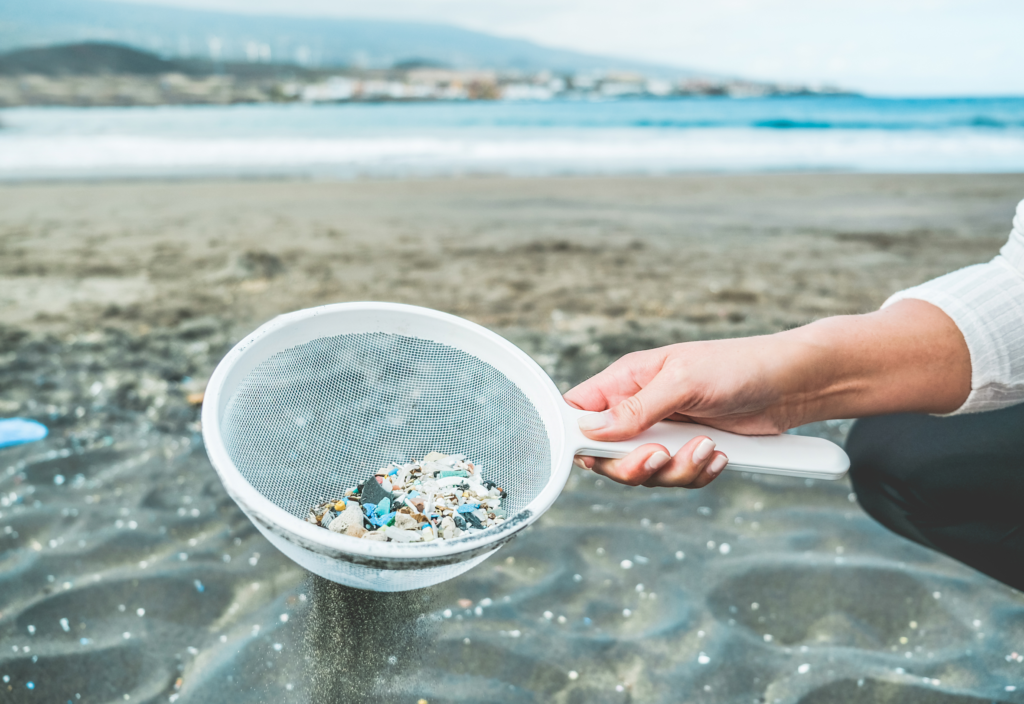Microplastics: What Are They?
Microplastics are the tiny pieces of plastic under 5mm in dimension. They result from diverse sources, such as plastic breakdown from larger products, personal care products containing microbeads, and synthetic fibers of clothing. Though they seem tiny, their impact is gigantic, affecting marine life all the way to the human being.
Read Also:
Is Caleb Williams Gay?
Sources of Microplastics in the Ocean
Microplastics enter the ocean from many sources, including the breakdown of litter, such as bottles and bags, which are first exposed to sunlight and degradation. Synthetic fibers from apparel lost during washing and microbeads in certain exfoliating personal care products make the list. Once they appear in waterways, eventually, they get into the ocean, and they really spread out from there.
How Microplastics Affect Marine Ecosystems
This is a serious cases in the marine ecosystem especially because microplastics are barely biodegradable. Microplastics have spilled over into all levels of marine water life, from surface waters to the bottom of the ocean in some areas.
Impact on Marine Species
This leads to the ingestion of the microplastics by most marine animals since they can mistake it as food. Such a mistake is usually witnessed in small fish, seabirds, turtles, and even big marine mammals. Once ingested, plastic affects the digestive systems, leading to malnutrition and poisoning in severe cases, with death occurring sometimes. A case in point would be that of a turtle mistakenly taking a plastic bag as a jellyfish; its health can get worse from the ingestion of the same.
Disruption of Food Chains
Microplastics in marine systems disrupt the food chain. Smaller organisms that feed on microplastics facilitate the movement of these particles up the food chain since the largest animals consume the smaller ones, a process that can destroy food webs entirely and allow it to reach even top predators and disturb the natural balance systems in marine ecosystems.
Movement of Microplastics Within the Ocean
Ocean currents carry these microplastics far into the environment. As far as we can determine, some of these microplastics have also reached areas beyond which many assumed no more microplastic pollutants existed-including, astonishingly enough, both Arctic and the deepest of ocean trenches. This extreme spread means there is every probability for microplastic contaminants anywhere in a marine ecosystem to occur everywhere.
Microplastics in Remote and Deep-Sea Areas
The most worrying discovery is that microplastics have been found in deep-sea sediments and remote polar regions, far beyond human influence. These microplastics are typically trapped in ocean currents, settling to the bottom of the ocean and collecting in areas not affected by human pollution. The extent of this impact makes even the most isolated marine ecosystems no longer pristine.
Health Implications for Marine Animals
The health effects of microplastics to marine animals are significant and alarming. When the microplastics are ingested, toxic chemicals enter their bodies, which cause different health issues.
Ingestion and Toxicity
The plastic particles carry toxic substances like pesticides and heavy metals, which attach to the plastic particles in the ocean. After the marine animals have ingested the particles, the toxins starts accumulating in their body. Eventually, this is bad for the animals’ health because their bodies are compromised and they often fall sick.
The accumulation of toxic chemicals in living organisms.
The term Bioaccumulation is defined as the buildup of toxins in the body at a rate that the animal cannot metabolize them out. In this respect, microplastics are even worse since they accumulate chemicals in the water and then release them at once. As these particles are consumed by different species, then get to build up in larger predators, like fish, this is eaten by humans.
Health Effects on Humans
Harm done by the microplastic not only to marine organisms, but it harms mankind at large through fish. People ingest the latter if this one has ended in fish from that particular stretch.
Presence of Micro-plastic
Humans who consume seafood are consuming microplastics not only that has been ingested by fish but also shellfish. Further research needs to be done and however, early studies show that these plastics, and the toxins which they bring along with them, are probably long-term threat to human health. Microplastics have at one point or the other been seen in salt and drinking water, that makes it part of what we consume daily.
Long-term Health Risks
Consequences of microplastics on the long-term health of a person are still a mystery. However the scientists consider that it can result in chronic inflammation, hormonal disruption among others. Besides the microplastics that are still being discovered in the ocean, they are also a danger to the lives of human beings prompting the need for the prompt solution to this problem.
Methods to Reduce Microplastics in Oceans
However much this problem of microplastics may appear daunting there are some few things that can be done to reduce the levels of microplastic in our oceans. Such solutions revolve around waste management and plastic use reduction.
Improvement in Waste Management
Enhanced waste disposal particularly along the shoreline would go along way in minimizing the plastics that later end up in the sea. The management of plastics should be enhanced by increasing collection, recycling, and disposal practices and decreasing plastic consumption and disposal of plastic items will also reduce the chance of breaking down into microplastics in the ecosystem.
Reduce Plastic Use and Promote Alternatives
All these point to a broader scale and one of which is changing the use of plastic products. Thus we can decide to replace with usable bags, bottles, and material packages among others. This should also be an occasion for industries to start with the green packaging, in addition to using less of microbeads in the body products so that there is less of plastics afloat in the water bodies.


